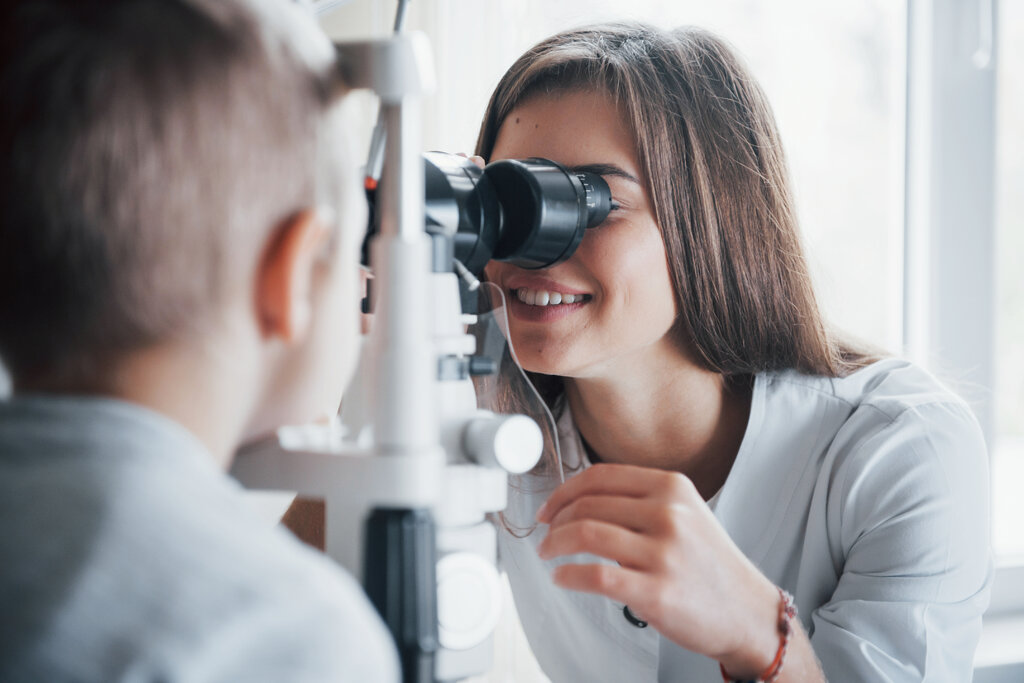
Eyewear Lingo
When choosing the right pair of glasses, it’s important to understand all the optical terms that are usually used to describe frames, lenses and even eye conditions. With better knowledge of these important optical terms, you will be able to choose a better pair of glasses next time!
Eyetician offers a wide collection of fashionable frames in different styles, colours and materials to ensure you find the perfect choice that suits your vision and taste. We are dedicated to helping all Canadians, whether they are in Vancouver or other cities, to experience the best vision possible. We are available through our customer support by email and phone to help you make the perfect eyeglasses decision.
In addition to that, we are happy to offer this easy to understand guide to help you understand the optical terms in order to choose the best frame based on your vision and style.
Eyewear Lingo
Astigmatism: A common eye condition caused by a curvature of the front surface of the lens or the lens inside the eye. It can lead to stretched vision causing headaches and eyestrain, however, this condition is generally treatable using the right glasses, contact lens, or surgery in some cases.
Bifocal: Glasses that offer vision correction for presbyopia in addition to for myopia, hyperopia, and/or astigmatism. Many lenses now offer no-line bifocal technology, although the first bifocal was invented by Benjamin Franklin.
Blue Light Filter: Lens technology that protects your eyes from harmful blue light by blocking UV rays emitted from digital devices, they can actually cut 94% of blue light, as you may already know, blue light can lead to permanent vision damage since it increases the risk of macular degeneration, which is a disease of the retina.
Bridge: The section of the frame that goes across the nose, or the distance between the two lenses measured from the inside, you should get low bridge eyeglasses when the slope of your nose is either level with or underneath your pupils.
Convergence: Your eyes move inwards towards each other to focus on near objects such as a book or a phone, however, you may suffer from convergence insufficiency when this movement doesn’t occur probably, glasses with prism lenses can help you with this condition.
Cornea: It’s the outer clear and round structure that covers your iris and pupil allowing the light to enter the eye through the transparent front portion covering the iris, pupil and anterior chamber.
Distance Vision: It usually describes the ability to see far objects that are 20 feet in distance or more.
Farsightedness: Also known as hyperopia, it’s a common vision condition causing near objects to appear blurry while seeing distance objects clearly, it can be easily treated using eyeglasses or contact lenses.
Floaters: Undissolved vitreous humour that causes small dark shapes floating across your vision, this condition doesn’t need any treatment if it comes and go, however, it can be a sign of a serious eye problem.
Iris: The circular structure in the eye that controls how much light reaches the retina by dilate or constricting. It also determines your eye color in general.
Nearsightedness: Also referred to as Myopia, causing close objects to appear clearly, but those far away to appear blurred, it happens due to a refractive error which occurs when the eye doesn't focus light correctly. Myopia cannot be cured; however, it can be treated in order to slow or even stop the condition from getting worse especially since most cases develop in childhood.
Nose Pad: The pads (clear or metal) that fit on either side of the nose, come in different sizes and different materials such as plastic and silicone, most doctors recommend using silicon nose pads since they are more comfortable.
Plano: A non-prescription lens that can be available in clear or sunglasses lenses, they provide no vision correction, however, they can protect your eyes from the dust, dirt, and wood chips, in addition to adding a stylish look to your style.
Progressive Lenses: Also called multifocal lenses, they are designed to have three prescriptions in one pair of eyeglasses, they help you see close, middle distance, and far objects clearly. That’s why, they can be used for reading, using computers, and even driving.
Pupil: Located in the center of the eye, this black opening called the pupil allows light to hit the retina, doctors look at the way your pupil react to light as a sign of your health
Refraction: It’s an eye test used to determine a patient's prescription, during this test, the doctor will ask you to sit in a chair look through a refractor, and focus on the eye chart to diagnose and treat any possible eye conditions.
Retina: Light-sensitive tissue located at the back of the eye, it senses the light and send images to your brain, as you get older, you may suffer from retina damage which can affect your vision in general.
Temple: Usually referred to as the arm of the eyeglasses, the temple of the frame runs from the lens to the ear, this measurement is important to determine how the eyeglasses will fit on your face, you can request to change the temple length, color, or even choose a material that suits you between plastic and metal.
Visual Acuity: It’s usually described the vision clearness or sharpness, it’s the most common clinical test to determine the function of your eyes.
Understanding how your vision works will help you choose the right frame and lenses to improve your vision.
Eyetician frames are designed to be flexible and accommodate lenses in a variety of thicknesses. Check out our selection of contemporary and unique frames on our website.
